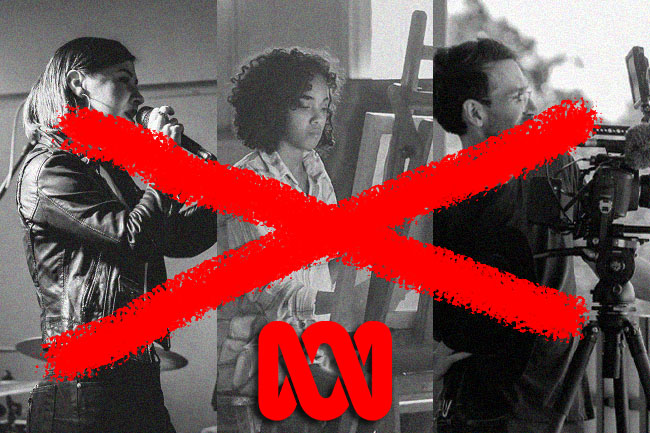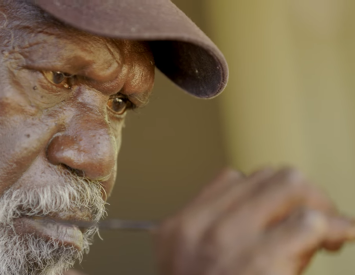It is important for arts workers and the arts industry to have access to insurance, writes Leya Reid.
LATE LAST Thursday, members of the National Association for the Visual Arts (NAVA) earned a major victory after QBE Insurance and Local Community Insurance Services (LCIS) reversed their decision to reduce coverage and products offered as part of the NAVA Premium Plus insurance policy. The changes could have left thousands of Australian artists and arts workers uninsured and unable to work.
While NAVA’s advocacy (alongside other arts service organisations with the same group policy) secured a huge and proud win for the arts sector, there is more work to do to stay ahead of the shifting insurance landscape. In recent years, many insurance providers have removed products and reduced coverage while increasing the cost of premiums. These changes will continue to have a significant impact on the work, practices and incomes of artists and arts workers across the entire sector.
The hardening insurance market for artists reflects a broader trend among insurance providers to be more risk-averse. This trend is driven by a combination of factors, including rising claims and costs associated with COVID-19 and extreme weather events such as floods and bushfires, low-interest rates and falling investment returns. Many insurance providers have responded by reducing the range of insurance coverage and products to cover their costs and maintain profitability.
Affordable and accessible insurance is an essential part of sustaining professional practice, providing protection for artists and arts workers against a range of risks.
Visual artists, craft practitioners and designers are often required to have their own insurance in order to participate in a wide range of activities, such as exhibiting, undertaking a residency, creating works in public spaces, presenting workshops, renting a studio, participating in an open studio trail, and presenting or selling work at market stalls.
Similarly, arts workers (curators, installers, registrars, conservators, arts administrators) will find that public and professional indemnity is compulsory when engaged as independent contractors.
While the tightening insurance market has consequences that affect a wide range of professions and industries, the impacts are particularly acute for independent artists and arts workers. Many will struggle to afford higher premiums or find it difficult to obtain appropriate coverage, leading to income loss and emotional and financial hardship.
Some may opt to take on greater risk in order to reduce their insurance costs, resulting in greater exposure to litigation and legal costs. Others may abandon their work and practices altogether.
Prior to the QBE policy backflip, the changes ruled out artists who use kilns and tools or equipment that produce an open flame, as well as those who sell or present work at market stalls and art fairs, cutting out entire practices from accessing the insurance package. Professional indemnity coverage was also removed from the policy offering.
Reducing the coverage of selling or presenting work at market stalls would be significantly felt by a large number of independent First Nations artists who display and sell works at Aboriginal art fairs held across the country, such as the Tarnanthi Art Fair in Adelaide, SA and the regular Blak Markets in La Perouse, NSW. Many would have to source alternative, more expensive insurance options, while others may have been priced out of participating entirely.
In parallel, the decision by insurance providers to strip out coverage for kiln use and open flames would have a profound impact on the booming ceramics industry as well as glass practitioners, jewellers, silversmiths, blacksmiths, and sculptors. Without access to NAVA’s discounted insurance package, many ceramic and glass artists were forced to seek out more expensive business insurance. This may limit their ability to create, show and sell their work, ultimately reducing their income and stifling their artistic practices.
Discounted insurance is critical to sustaining the work and practices of visual artists and arts workers. Without adequate insurance coverage, these risks can cause significant financial and emotional stress, and may even prevent artists and arts workers from continuing their work and practices. Moreover, insurance can provide a sense of security that allows artists to focus on their artistic practices, creative experimentation and the development of their careers.
Unfortunately, it appears the arts sector will continue to be affected by the hardening insurance market. Higher premiums and risk aversion will limit the capacity of artists and arts workers to experiment freely in their work. NAVA will continue collaborating with its members and sector colleagues to ensure adequate insurance is widely available and accessible to the visual arts.
Leya Reid is the Communications & Advocacy Manager at the National Association for the Visual Arts (NAVA).
Related Articles
- Government needs a strategic vision for arts and culture
- Federal insurance scheme needed to revitalise arts sector
- Australia's music scene plunges deeper into poverty
- Coalition's arts recovery package lacks heart
- Katharine Brisbane's legacy: A critique of our stale arts sector
 This work is licensed under a Creative Commons Attribution-NonCommercial-NoDerivs 3.0 Australia License
This work is licensed under a Creative Commons Attribution-NonCommercial-NoDerivs 3.0 Australia License
Support independent journalism Subscribe to IA.















